Have you ever stood up after a long day of sitting and felt like your backside simply forgot how to move? Maybe it wasn’t sore, but weirdly weak or disconnected? That sensation isn’t your imagination—it could be gluteal amnesia, also known as “dead butt syndrome.” At Proactive Health, we’ve seen how easily this condition can sneak up, especially on people who sit a lot for work or training. The good news? It’s totally treatable with the right approach. Let’s unpack what causes gluteal amnesia, how to spot it, and—most importantly—how to fix it for good.
Understanding Gluteal Amnesia
Gluteal amnesia occurs when your glute muscles, particularly the gluteus medius and gluteus maximus, stop firing properly. They “go offline” because they haven’t been actively used, and your body starts relying on other muscles—like your lower back or hamstrings—to pick up the slack. Over time, this compensation can create imbalances, chronic pain, and poor posture.
What Exactly Are the Glutes Supposed to Do?
Your glutes are the powerhouses behind walking, running, standing, climbing stairs, and even just maintaining posture. When they stop activating, the kinetic chain gets thrown off, often causing issues in the hips, knees, and lower back. It’s not that the glutes are damaged—they’re just not getting the memo from your brain. That miscommunication is what we call gluteal amnesia.
Common Causes
So, what flips the “off” switch on your glutes? Turns out, it’s not just inactivity.
1. Prolonged Sitting
This is the biggest culprit. When you sit for hours every day, your hip flexors tighten and glutes lengthen and weaken. That muscle imbalance makes it harder for the glutes to engage when you stand or move.
2. Muscle Imbalances
If you tend to overuse certain muscles—like your quads during squats or your hamstrings when you run—your glutes might never get the chance to take the lead.
3. Poor Posture
Anterior pelvic tilt (when your pelvis tilts forward) can deactivate your glutes and over-activate your lumbar spine. This posture issue is common in both sedentary folks and athletes.
4. Incomplete Workouts
Even avid gym-goers can fall into this trap. Focusing solely on big lifts without specific glute activation work can leave these muscles dormant.
5. Injury or Pain Compensation
If you’ve had a past injury to the hip, back, or knee, your body may unconsciously avoid using the glutes to prevent pain. Over time, that avoidance turns into habitual non-use.
Diagnosis
Recognizing gluteal amnesia early is key to preventing long-term dysfunction.
Self-Assessment
Try a simple glute bridge. Lie on your back, knees bent, feet flat, and lift your hips. Feel where the effort is coming from. If your hamstrings or lower back are doing all the work while your glutes feel flat-lined, that’s a red flag.
Clinical Evaluation at Proactive Health
At Proactive Health, we offer functional movement assessments to test glute strength and firing patterns. We might use tests like the Trendelenburg sign (which checks glute medius function) or observe your gait and squat form. These real-world evaluations give us a clear picture of where breakdowns are happening.
Symptoms to Watch For
Gluteal amnesia doesn’t just mean your butt feels off. It can lead to:
- Lower back pain
- Hip discomfort or instability
- Knee tracking issues
- Hamstring strains
- Poor balance or posture
- Fatigue during activities that used to feel easy
These symptoms often build slowly, making them easy to ignore until they start interfering with daily life.
Treatment Options
The goal with gluteal amnesia is two-fold: reactivate the glutes and retrain the body to use them effectively. Here’s how we tackle it at Proactive Health.
Home Remedies and Daily Adjustments
Move More, Sit Less
Set a timer to get up every 30-45 minutes. A quick walk or standing stretch can wake up your nervous system and break the glute shutdown cycle.
Gluteal Squeezes
While sitting or lying down, practice squeezing each glute individually and then both together. These low-intensity contractions help restore the brain-muscle connection.
Posture Tweaks
Adjust your workstation so hips and knees are at 90 degrees. Engage your core and keep a neutral spine while sitting.
Targeted Exercises
We build customized glute activation plans based on your needs, but some staple moves include:
- Clamshells – Lying on your side with a resistance band above the knees, open and close your knees like a clam to target the glute medius.
- Glute Bridges and Hip Thrusts – Focus on driving through your heels and squeezing your glutes at the top.
- Monster Walks with Bands – A great way to engage glute medius and build lateral stability.
- Step-ups – Emphasize control and activation with each lift.
- Deadlifts (done correctly) – Help restore posterior chain dominance.
Professional Physical Therapy
At Proactive Health, our therapists design glute-focused rehab protocols that include manual therapy and progressive resistance training. If your glutes just aren’t waking up, we also offer techniques like dry needling or electrical muscle stimulation to jump-start the process.
Prevention Tips
If you’ve never had gluteal amnesia, or just overcame it, prevention is your best bet to stay pain-free.
1. Mix Up Your Movement
Alternate sitting with standing tasks. Take walking meetings. Use a stability ball chair. Anything to keep those muscles from zoning out.
2. Warm Up Smarter
Before any workout, add in glute activation drills like banded bridges, lateral walks, or bodyweight squats. This ensures your glutes are primed to fire.
3. Prioritize Strength Training
Include glute-specific movements in your workouts at least 2–3 times a week. Don’t just squat—learn to isolate, activate, and then integrate glutes into your lifts.
4. Address Postural Issues
Anterior pelvic tilt and swayback posture can be corrected with targeted mobility and core work. Our team at Proactive Health can guide you through the right drills.
Why Proactive Health?
We don’t believe in cookie-cutter care. When it comes to treating gluteal amnesia, we combine cutting-edge diagnostics with personalized plans that empower you to take control of your movement.
Here’s what sets us apart:
- Movement Assessments rooted in real-life function
- One-on-one therapy sessions tailored to your progress
- Education-focused approach that helps you understand your body
- A proactive philosophy that treats root causes, not just symptoms
Take Action Now
Ready to get your glutes back online? Whether you’re a desk warrior, weekend athlete, or just tired of feeling out of sync with your body, we’re here to help. Book a consultation at Proactive Health today and let’s rebuild your foundation from the glutes up.
Don’t wait until it turns into chronic pain. Your body—and your future self—will thank you.



